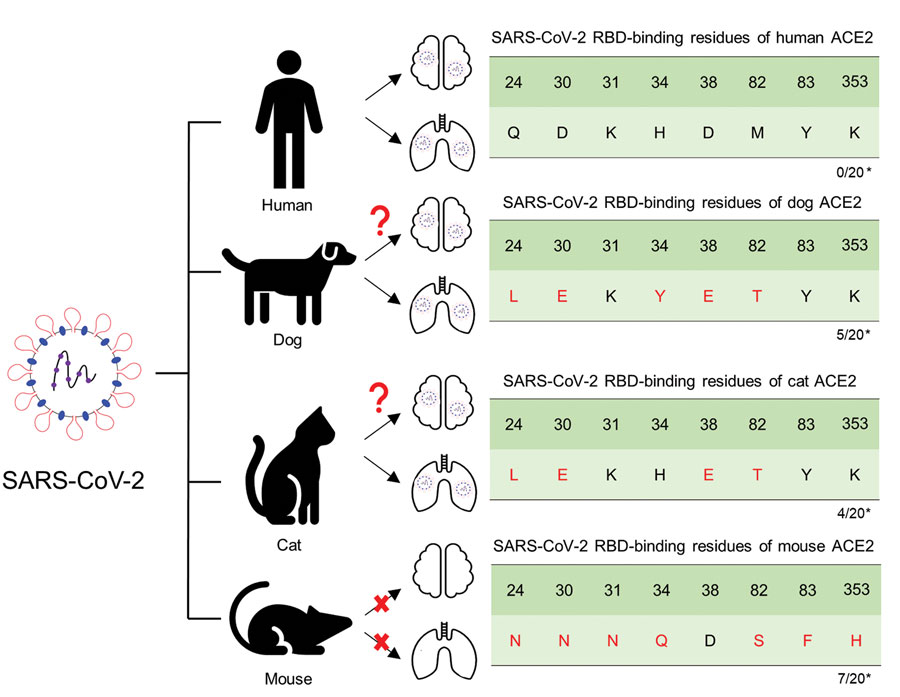Volume 29, Number 11—November 2023
Research
Neurologic Effects of SARS-CoV-2 Transmitted among Dogs
Figure 1

Figure 1. Schematic diagram representing susceptibility to SARS-CoV-2 infection in the lungs and brain of animals with potential for human transmission and homology of ACE2 amino acid sequences in study of the neurologic effects of SARS-CoV-2. *Number of mutations among the key 20 residues involved in interacting with the SARS-CoV-2 RBD. ACE2, angiotensin-converting enzyme 2; RBD, receptor-binding domain.
1These authors contributed equally to this article.
Page created: September 18, 2023
Page updated: October 23, 2023
Page reviewed: October 23, 2023
The conclusions, findings, and opinions expressed by authors contributing to this journal do not necessarily reflect the official position of the U.S. Department of Health and Human Services, the Public Health Service, the Centers for Disease Control and Prevention, or the authors' affiliated institutions. Use of trade names is for identification only and does not imply endorsement by any of the groups named above.